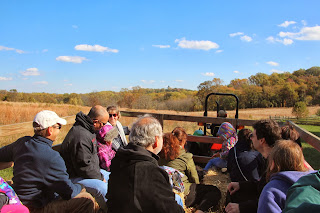In 2003, our organization expanded a forest restoration project originally begun in 1990. In the expanded planting of 200 trees, we included a dozen pure American chestnuts (Castanea dentata) that we obtained from a nursery in Oregon. The Oregon nursery said it believed its seedlings were resistant to the chestnut blight fungus (Cryphonectria parasitica), a pathogen introduced into the United States in the 1920s via imported Chinese chestnut trees.
For those who don't know the story of chestnut blight, the fungus quickly spread from the point of introduction (New York City) throughout the eastern United States. By the time the pandemic had subsided, one quarter of all trees in the eastern deciduous forest had died, and what had been a major component of the forest became, for all intents and purposes, ecologically extinct in only a few decades. (Not all chestnut trees died outright; the roots of some of the trees remain alive and continue to produce sprouts. Once the sprouts reach about 20 feet in height, they are attacked by the fungus again [the fungus remains in the environment] and die back to the ground. Some saplings even survive long enough to flower and set seed.)
With regard to our planting, the chestnuts have grown tall and beautiful over the last decade; perhaps, I hoped, they really were resistant to the fungus as the nursery suggested. Then, two weeks ago while on a walk, I noticed that one of the trees had a wound located right a the top of the tree shelter we use to protect all trees from deer damage. Maybe the tree shelter had rubbed the bark and caused the wound... But, you probably already know where this is going. On closer inspection and upon comparison with references, the wound turned out to be a canker caused by the blight fungus. In fact, there are tiny tell-tale red fungal fruiting bodies on the bark surrounding the canker as well, visible above the canker if you look closely at the image accompanying this post.
I contacted the American Chestnut Foundation (which is trying to develop a resistant chestnut strain) to determine if I should destroy the tree to prevent or delay the fungus from spreading to the other chestnuts. The Foundation's representative told me that my story was all too familiar and that destroying the tree would only delay spreading the fungus by a very short time. Better, the person said, would be to let nature takes it course and, hopefully, the roots will re-sprout once the above-ground portion of the tree dies back.
No Egos
1 hour ago




























